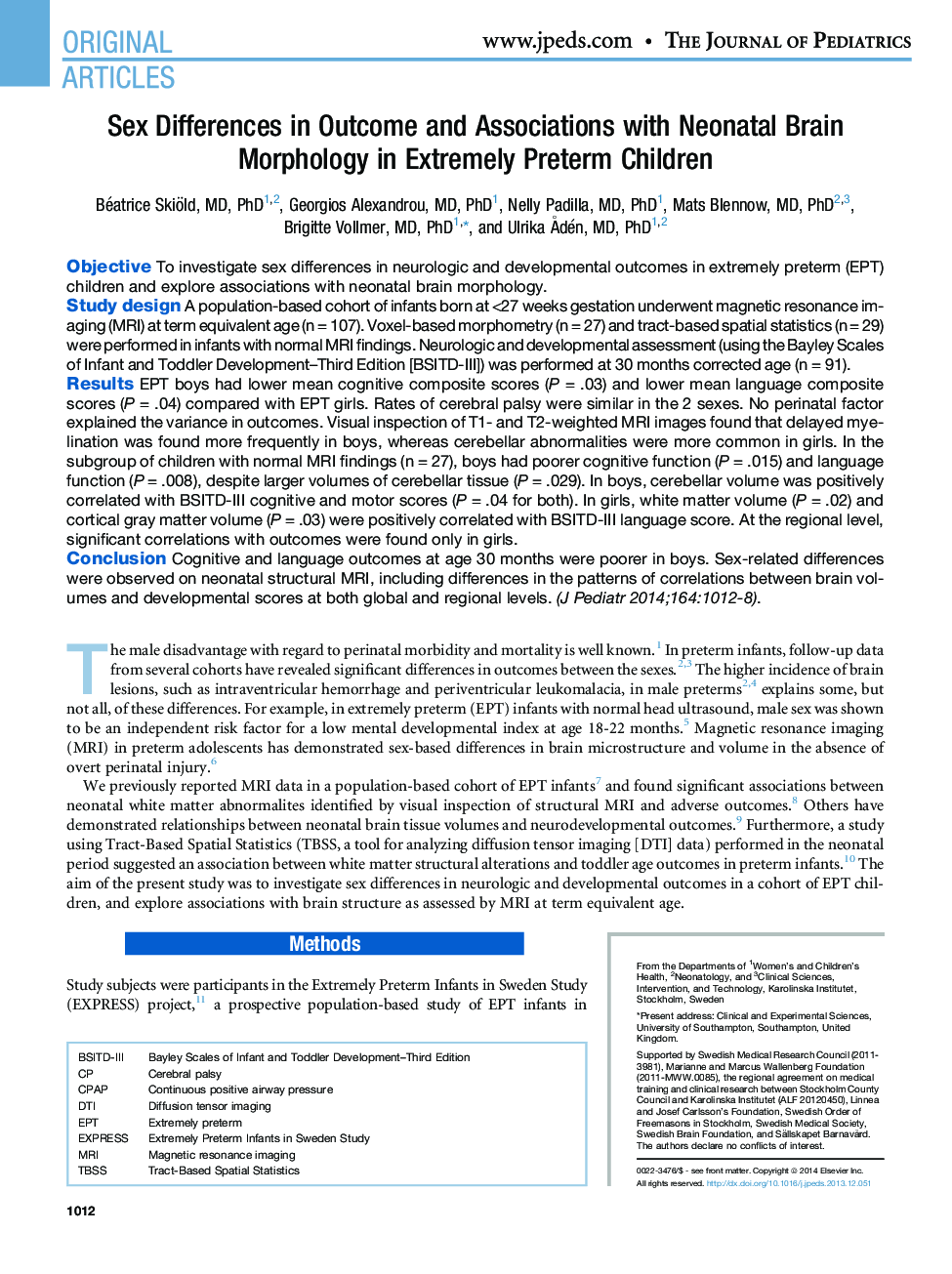| کد مقاله | کد نشریه | سال انتشار | مقاله انگلیسی | نسخه تمام متن |
|---|---|---|---|---|
| 6222140 | 1607455 | 2014 | 7 صفحه PDF | دانلود رایگان |
ObjectiveTo investigate sex differences in neurologic and developmental outcomes in extremely preterm (EPT) children and explore associations with neonatal brain morphology.Study designA population-based cohort of infants born at <27 weeks gestation underwent magnetic resonance imaging (MRI) at term equivalent age (n = 107). Voxel-based morphometry (n = 27) and tract-based spatial statistics (n = 29) were performed in infants with normal MRI findings. Neurologic and developmental assessment (using the Bayley Scales of Infant and Toddler Development-Third Edition [BSITD-III]) was performed at 30 months corrected age (n = 91).ResultsEPT boys had lower mean cognitive composite scores (P = .03) and lower mean language composite scores (P = .04) compared with EPT girls. Rates of cerebral palsy were similar in the 2 sexes. No perinatal factor explained the variance in outcomes. Visual inspection of T1- and T2-weighted MRI images found that delayed myelination was found more frequently in boys, whereas cerebellar abnormalities were more common in girls. In the subgroup of children with normal MRI findings (n = 27), boys had poorer cognitive function (P = .015) and language function (P = .008), despite larger volumes of cerebellar tissue (P = .029). In boys, cerebellar volume was positively correlated with BSITD-III cognitive and motor scores (P = .04 for both). In girls, white matter volume (P = .02) and cortical gray matter volume (P = .03) were positively correlated with BSITD-III language score. At the regional level, significant correlations with outcomes were found only in girls.ConclusionCognitive and language outcomes at age 30 months were poorer in boys. Sex-related differences were observed on neonatal structural MRI, including differences in the patterns of correlations between brain volumes and developmental scores at both global and regional levels.
Journal: The Journal of Pediatrics - Volume 164, Issue 5, May 2014, Pages 1012-1018
